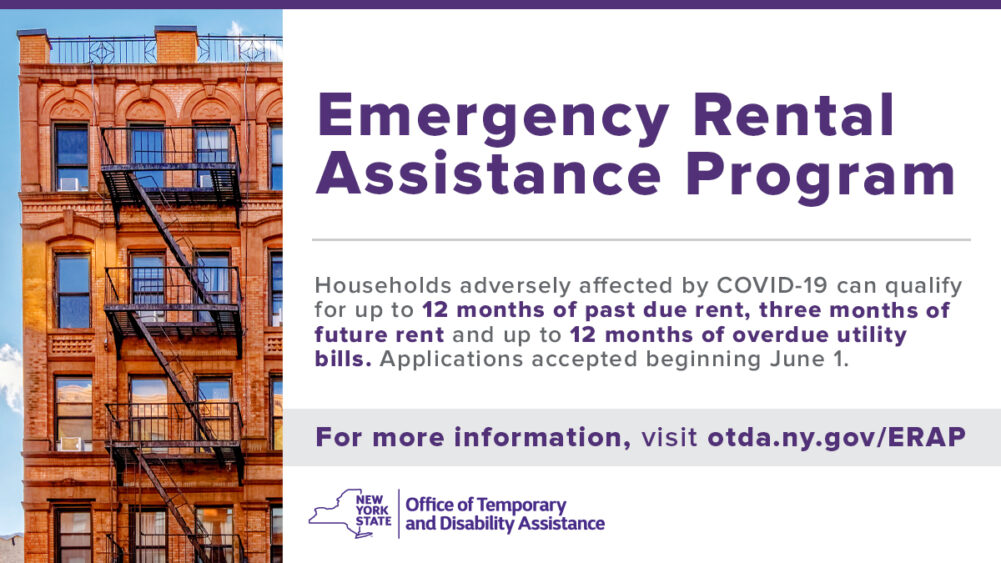A handful of Long Island landlords are joining a bigger protest in Manhattan Monday morning to express their anger at the handling of a rent assistance program that they say has harmed them financially.
The landlords will demonstrate outside the New York office of Gov. Kathy Hochul over the operation of the Emergency Rental Assistance Program, put into place at the beginning of the COVID-19 epidemic, adding their voices to those of a statewide landlords organization and a Chinese-American landlords group from Queens.
When the Covid-19 epidemic began sweeping across New York State, then-Gov. Andrew Cuomo was quick to impose rules on many aspects of residents’ lives, including on rentals, hoping to prevent a wave of evictions that no municipality was prepared to handle.
No one wanted to see people penalized twice, first by losing their jobs because of government edicts, and then by losing their homes because they could no longer pay their rent.
Early on, rumors spread of a few landlords tossing out tenants, who either didn’t speak English well or who were vulnerable because of their immigration status. Some were reported to have lost apartments with little notice, forced to move into housing with other families, when all prevailing medical advice at the time was to keep away from others to lessen the spread of the virus.
The state’s solution was ERAP, which was meant to help tenants affected by Covid-19, either because they or someone in their family was ill, or they had lost their jobs,to pay the rent, protecting both tenants and landlords, and came with a series of rules that both parties were supposed to follow.
Because of the Covid-19 shutdowns, courts and other legal processes that handled landlord-tenant disputes and evictions also ground to a halt or were severely hampered, as was the interpretation and understanding of exactly how the rules should be applied.
Several organizations stepped up to assist tenants through the paperwork needed to apply for the funds and many tenants receive the help they needed to stay put.
But some landlords, who often manage just one or two units, had different experiences.
The gulf that exists between tenants and landlords can be huge, even in a limited suburban rental market like Huntington’s. While one owner complained that the ERAP numbers claiming that the program was a success were fudged, someone who advocates for tenant rights looked at similar numbers and said that they proved that landlords were greedy and not using the program because they didn’t want to have to pay taxes on the rental income.
Some owners complain now that what happened to them under the state program amounted to property theft, making them victims of a handful of tenants who worked the system to their advantage, instead of using it as a way to get back on their feet.
One landlord after another has told stories of having to hire lawyers as tenants failed or were unwilling to complete ERAP paperwork, of returning to court time after time, running up legal fees, of permanently lost income running in the tens of thousands of dollars, and an inability to control their own property.
One Huntington landlord spent more than a year trying to remove a tenant who had not paid rent for 24 months. Another man said he tried to get his tenant to pay rent for more than a year before deciding space to sell the house but the tenant refused to allow the appraiser into the building so the owner was unable to proceed with the sale. He then offered the tenant $10,000 to move out, which the tenant initially accepted, the owner said, but then insisted on demanding more money, up to $30,000. That payment also failed.
When some tenants failed to complete the ERAP paperwork and left landlords without rental income, the state added a second program called LRAP– landlord rental assistance program.
But multiple owners have complained that as the program, which began as a short-term fix, dragged on, they received a barrage of incorrect information from the state office, and encountered failures to return emails or phone calls and other system breakdowns, leaving them unpaid for months and years at a time.
“I don’t think anybody that originally supported this wanted this to be a long-term program,” said State Assemblyman Steve Stern, D-Dix Hills.
“It was simply a way to keep people in their homes and have the costs of keeping people in their homes during a pandemic crisis covered and so both landlords and tenants would be secure as the pandemic washed over. Then hopefully we return to normalcy. I don’t know of any colleague that I ever had a conversation with up in Albany that intended for this to be any kind of a long-term program,” he said.
“I know that property owners are really hurting and so that’s why early on, I started to come out in opposition to any further extension because what started with good intentions, we quickly came to realize that it was not working as intended and it seemed unlikely to work as intended going forward.”
Stern began working with colleagues to find solutions when he began hearing complaints from property owners. Many of the complaints came from owners of single unit apartments, people who have accessory apartment permits to rent out single apartments in their own homes.
Many of the complaints from landlords revolve around how the courts interpret eviction protection orders. That mean evictions cannot go forward unless the ERAP application is complete. That has led, one landlord says, to his having to appear in court 12 times so far and the matter is not resolved. He said that he attempted to buy out his tenant for $10,000, compelling him to leave, but after initially agreeing, the tenant demanded $30,000. The case is not resolved.

